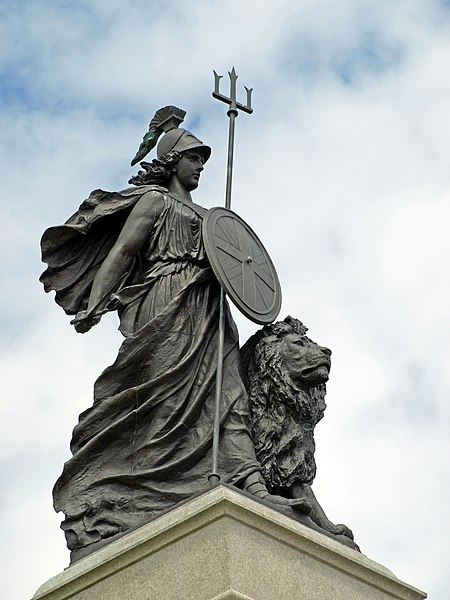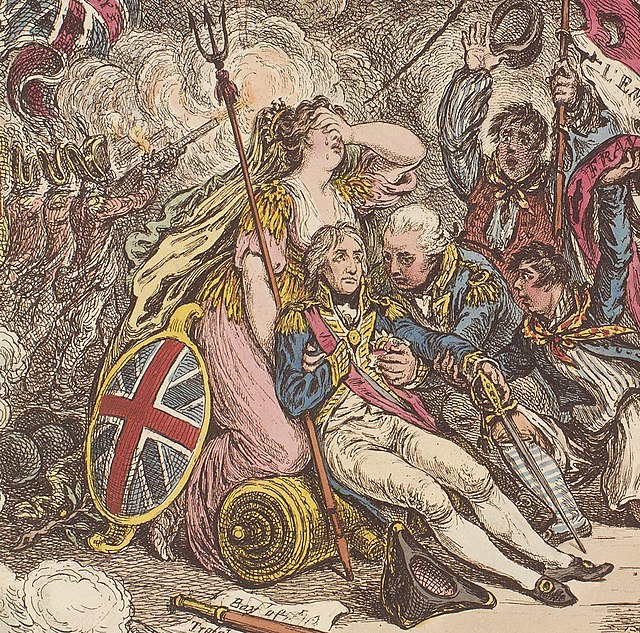Britannia is the national personification of Britain as a helmeted female warrior holding a trident and shield. An image first used by the Romans in classical antiquity, the Latin Britannia was the name variously applied to the British Isles, Great Britain, and the Roman province of Britain during the Roman Empire. Typically depicted reclining or seated with spear and shield since appearing thus on Roman coins of the 2nd century AD, the classical national allegory was revived in the early modern period. On coins of the pound sterling issued by Charles II of England, Scotland, and Ireland, Britannia appears with her shield bearing the Union Flag. To symbolise the Royal Navy's victories, Britannia's spear became the characteristic trident in 1797, and a helmet was added to the coinage in 1825.
The Armada Memorial in Plymouth depicting Britannia
Reverse of a denarius of Carausius (r. 286–293), ruler of the Roman Britannic Empire, showing Britannia (left) welcoming the emperor with the words veni expectate (lit. 'Come, O expected one')
Britannia mourning the death of Horatio Nelson, 1st Viscount Nelson at the victorious Battle of Trafalgar in a cartoon by James Gillray
Reception of the American Loyalists by Great Britain in the Year 1783 engraved by Henry Moses after Benjamin West. Loyalists seek aid from Britannia after their expulsion from the United States.
A national personification is an anthropomorphic personification of a state or the people(s) it inhabits. It may appear in political cartoons and propaganda.
Britannia arm-in-arm with Uncle Sam symbolizes the British-American alliance in World War I. The two animals, the Bald eagle and the Barbary lion, are also national personifications of the two countries.
The Liberty of Oudiné in memory of the Argentine centenary of the May Revolution (1810-1910).
An early example of national personification in a gospel book dated 990: Sclavinia, Germania, Gallia, and Roma, bringing offerings to Emperor Otto III.
Italia und Germania (1828) by Johann Friedrich Overbeck.








